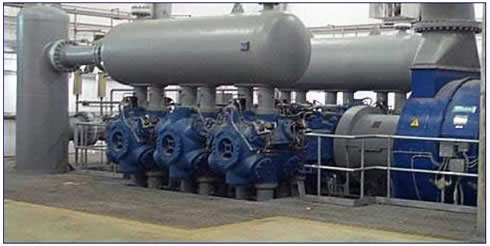Reciprocating compressors are a critical element of the U.S. pipeline’s compression mix, but current options all require compromises – in cost, efficiency, capacity, reliability, or a combination of these. The ARCT program could compel the U.S. pipeline industry to realize the great benefits of reciprocating compression (flexibility, efficiency) with less compromise.
The ARCT program has taken the first step toward the next generation of reciprocating compressor technology, enhancing the flexibility, efficiency, reliability, and integrity of pipeline operations. The technologies developed by this program could eventually provide pipeline operators with improved choices for new compression and innovative products that can be retrofitted to existing machines. The development of these advances could substantially increase compression efficiency and increase overall natural gas throughput capacity from existing and new compression systems, enhancing the reliability of natural gas delivery from the infrastructure.
Results:
During the course of this one-year project, a number of critical needs were identified and eighteen technology solutions were initiated. These technologies have been matured to a proof-of- concept stage. The GMRC PSC has recommended advancing half of these technologies to the next stage under separate funding.
The program has initiated development of technology solutions to address the current limitations of modern high-speed compression, thus enabling this equipment to meet its full potential. If this does indeed occur, the ARCT program will meet its stated objective of creating the next generation of reciprocating compressor technology that provides added pipeline flexibility at reduced capital cost.
Most of the currently installed fleet of pipeline reciprocating machines are slow speed integral compressors. Almost all new reciprocating machines are large-horsepower, high speed compressors. It is, therefore, imperative that any meaningful solutions must address both classes of machines.
The objective of this program was to initiate efforts toward creation of the next generation of reciprocating compressor technology for both classes of machinery. It is believed that the preliminary developments under this program represent significant initial efforts toward accomplishing the following goals for the next generation of compression:
- Improved flexibility (50% turndown)
- Improved efficiency (90%)
- Improved reliability (order of magnitude increase in valve life with half of the pressure drop)
- Improved integrity (vibration less than 0.75 IPS)
- The ARCT program has proven the concept of a number of enabling technologies that have the potential to meet these ambitious goals.
Retrofit technologies that address the challenges of slow-speed integral compression are:
- Optimum turndown using a combination of speed and clearance with single-acting operation as a last resort.
- If single acting is required, implement infinite length nozzles to address nozzle pulsation and tunable side branch absorbers for 1x lateral pulsations.
- Advanced valves, either the semi-active plate valve or the passive rotary valve, to extend valve life to three years with half the pressure drop.
This next generation of slow-speed compression should attain 95% efficiency, a three year valve life, and expanded turndown. New installation technologies that address the challenges of large-horsepower, high speed compression are:
- Optimum turndown with unit speed.
- Tapered nozzles to effectively reduce nozzle pulsation with half the pressure drop and minimization of mechanical cylinder stretch induced vibrations.
- Tunable side branch absorber or high-order filter bottle to address lateral piping pulsations over the entire extended speed range with minimal pressure drop.
- Semi-active plate valves or passive rotary valves to extend valve life to two years with half the pressure drop.
This next generation of large-horsepower, high-speed compression should attain 90% efficiency, a two-year valve life, 50% turndown, and less than 0.75 IPS vibration. The potential to attain these next generation goals are within the industry’s reach if the identified technology concepts are fully matured to commercially available products and service during the next stage of development.




